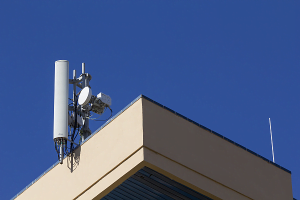Screening candidates for team fit is more fruitful and accurate than corporate culture match. Work is a lot like life in general in that screening candidates cultural fit is what many strive for. While it is a lofty goal, it is also a bit of star Trek wishful thinking that all will be well in the universe and a perfect hire will happen.
In life, we tend to mingle with people who are quite like ourselves. As an individual, a person would usually be drawn to another who expresses similarities, in language, music, and style are among the things. In a few words: we are attracted to the same culture. The same goes for the business world.
Companies have a selection process where they usually look for candidates who share the same values and methods of their organization, i.e corporate culture. Screening candidates for team fit takes more work but in the end it is about the performance of the team and the impact the individuals being considered for hire will impact team dynamics.
Each team has their own culture. And teams are made up of individuals. If everyone thinks the same and has the same corporate culture and process methods philosophy, their is no innovation, no challenge to different thoughts as everyone is robotic in their thinking.
And cultural fit should not be mistaken for one’s own prejudice. A candidate should be hired based on how they would make a positive impact on the team he/she will work within and how that in the end would be beneficial for the company without clashing with other employees and while at the same time maintain demeanor. If these are met y assessing team fit instead of culture fit, then that new hire is likely to fail.
Screening Candidates for Team Fit is Essential to Team Success
While cultural fit can be discerned in the screening process, whether the candidates fit the team he/she will work within is one of the main purposes of utilizing psychometrics to asses a candidate’s impact on team dynamics. The major problem is the reliance upon one-way behavioral testing that partially measures a potential candidate’s potential behavioral patters, values, and motivations, but fails to take into account the team composite regarding relational communications style, decision maing and conflict resolution skills, and leadership/management style.
Many feel that in a panel interview they can discern within a few hours how a candidate will impact team dynamics and weigh heavily on Human Resources to provide the behavioral assessment. the interaction established in the interview exhibits the candidate’s credentials to accomplish the job and an essential fit needed to perform efficiently within the role, but cannot measure team fit.
Behavioral interviews are often used; unfortunately, the standard practice does not work well. Organizations need to measure a candidate’s behavioral profile against the composite reading of the team’s behavioral profile. This type of psychometric measurement combined with the in-person interviews can accurately tell how the candidate’s approach and conduct are compatible with the ones practiced within the team, as well as within the company.
According to Entrepreneur, Corporate culture is “a blend of values, beliefs, taboos, symbols, rituals and myths companies develop over time.” In itself, a company has their own identity within its workforce and it greatly varies from one organization to another. Within a company, it is common that different people are working together.
Screening Candidates for Team Fit Means a Good Hire
Screening candidates for team fit assures that teamwork is common and important in a corporate setting. Employees who value working with peers and acknowledge the input of various ideas is most likely to work well in an organization that puts emphasis working in teams. Working with others is an important part in business organizations.
However, when an employee prefers to work alone, he or she might be a good cultural fit in an organization that is more inclined in working in teams.Screening candidates for cultural fit and team fit also measures the capability of an employee to embrace diversity and exhibits no qualms in working in an organization that is compatible to their own set of principles and ideals. Companies need to recognize and employ candidates who exhibit these traits. Employees who are happy in their work environment tend to perform better and stay longer.
Despite the diverse personalities within a workforce, a company needs to find balance in shaping their work culture that will assure its accomplishment. Working in organizations would mean meeting a lot of people with different backgrounds. Both cultural fit and team fit emphasizes an employees’ abilities in and characteristics that can contribute to the success of the company.
A Recruitment Process Unmatched
NextGen’s award-winning Leadership Vault search process begins with the Discovery step where the objectives of the role, how a candidate will use their skills, team dynamics, and value proposition are determines. The target candidate profile includes researched competitor and company targets followed by documenting accomplishments, relative KPIs, depth of industry / customer relationships, and scientifically based team fit analysis.
Success based recruitment fees where majority is based on acceptable deliverables and the actual hire. Backed by a custom on-boarding plan and a 24 to 36 month replacement guarantee and a retention rate of 93% of our placements are working for same client at 3.5 years of service with 72% in 5 years. You should expect NOTHING LESS than hiring an “A player” when you pay a recruitment fee.






 Proper training for every step only makes sense. All medical professionals are bound under an ethics code with severe penalties for infringement. There have not yet been any serious attacks on medical IoT’s.
Proper training for every step only makes sense. All medical professionals are bound under an ethics code with severe penalties for infringement. There have not yet been any serious attacks on medical IoT’s.
 One of the gurus I learned from to define performance objectives focused recruiting is Lou Adler. Here is a
One of the gurus I learned from to define performance objectives focused recruiting is Lou Adler. Here is a 

 Cloaking technologies which are already underway and anti-gravity. Conspiracy theory websites are full of stories of government work on anti-gravy devices but have little in the way of concrete proof of the claims.
Cloaking technologies which are already underway and anti-gravity. Conspiracy theory websites are full of stories of government work on anti-gravy devices but have little in the way of concrete proof of the claims.
 However, the look and location of these towers is changing. So, a better description for a cell tower is “transmission hub,” or hub for short. Increasingly municipalities are rejecting the look of giant antenna arrays.
However, the look and location of these towers is changing. So, a better description for a cell tower is “transmission hub,” or hub for short. Increasingly municipalities are rejecting the look of giant antenna arrays.
 The recruiter should provide detailed documentation about relevant experience, accomplishments, leadership/staffing abilities, budget/P&L performance, analysis of industry expertise; depth of industry relationships.
The recruiter should provide detailed documentation about relevant experience, accomplishments, leadership/staffing abilities, budget/P&L performance, analysis of industry expertise; depth of industry relationships.